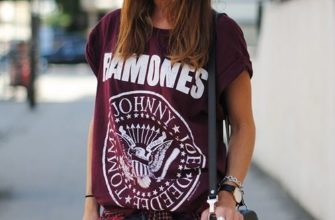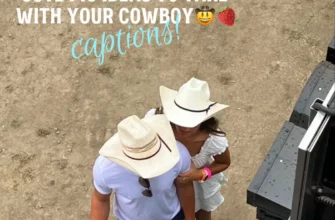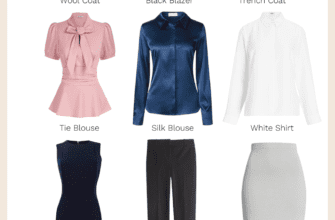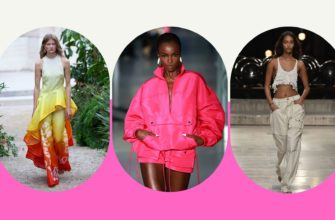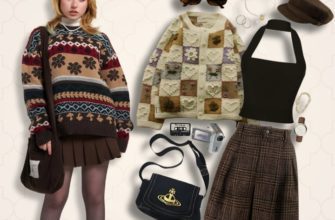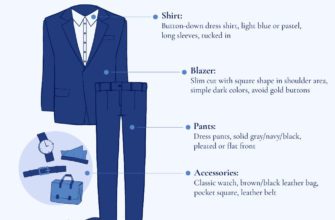Step into the vibrant world of Western fashion and be transported through the chapters of time as we uncover the captivating history of cowgirl attire. From the rugged plains of the Wild West to the glitzy allure of modern rodeo showcases, the styles and trends of cowgirl outfits have evolved, reflecting the changing times while maintaining a core sense of authenticity and adventure.
Embracing the spirit of the great frontier, the early cowgirls of the 19th century donned sturdy yet stylish garments that were perfectly suited for their rugged way of life. With an emphasis on functionality, these pioneers relied on durable materials and practical designs. Inspired by the rich traditions of Native American tribes, these early cowgirl fashionistas incorporated intricate beadwork, fringes, and vibrant patterns to add a touch of elegance to their attire, while exuding strength and resilience.
Revolutionize Your Health & Lifestyle!
Dive into the world of Ketogenic Diet. Learn how to lose weight effectively while enjoying your meals. It's not just a diet; it's a lifestyle change.
Learn MoreAs the 20th century unfolded, the cowgirl image began to transform, mirroring the societal changes taking place at the time. The rise of the silver screen and the emergence of Hollywood stars like Dale Evans and Barbara Stanwyck brought glamor and allure to the cowgirl fashion scene. Captivating audiences with their undeniable charm and timeless beauty, these icons popularized form-fitting denim jeans, checkered shirts, and bolo ties, effortlessly merging practicality with a touch of Hollywood panache.
- Origins of Rodeo Fashion: A Glimpse into the Wild West
- The Influence of Cowboy Culture
- The Role of Functionality in Clothing
- Traditional Western Attire: Hats, Boots, and Buckles
- Rodeo Fashion in the 20th Century: The Rise of the Cowboy Style
- From Ranch to Rodeo: The Transformation of Western Clothing
- The Impact of Hollywood on Rodeo Fashion
- The Birth of the Rodeo Queen: Glamour and Style
- The Modern Rodeo Fashion: A Fusion of Tradition and Contemporary Trends
- High Fashion Meets the Rodeo Arena
- Innovation in Materials and Design
- Rodeo Fashion as a Statement of Identity
- Rodeo Fashion Icons: Inspiring the Next Generation
- Questions and answers
Origins of Rodeo Fashion: A Glimpse into the Wild West
The Wild West era holds a captivating history filled with daring adventures, rugged landscapes, and fearless individuals who shaped the culture of the time. This section delves into the fascinating origins of rodeo fashion, providing a glimpse into the sartorial choices of those who embraced the untamed spirit of the Wild West.
In the early days of the Wild West, rodeo fashion emerged as a practical solution to suit the demanding needs of cowboys and cowgirls. These men and women, known for their skills in riding, roping, and herding cattle, required clothing that would withstand the harsh conditions of their daily lives. The attire needed to offer protection against extreme weather, while allowing freedom of movement for the challenging physical tasks performed on horseback.
|
One iconic piece of rodeo fashion that emerged during this time was the cowboy hat. Originally designed to shield riders from the intense sun, it quickly became a symbol of the Wild West culture. Made from durable materials such as felt or straw, these hats featured wide brims to provide shade and tall crowns for improved ventilation. |
Another essential garment in the rodeo wardrobe was the sturdy pair of denim jeans. Originally developed for miners, denim jeans proved to be incredibly resilient and offered cowboys and cowgirls much-needed durability in their chosen profession. The denim fabric was comfortable, yet tough enough to withstand the rigors of working with cattle. |
Additionally, rodeo fashion often incorporated decorative elements that reflected the individual styles and personalities of those involved in the Wild West. Intricate embroidery, ornate belt buckles, and leather fringe details became common features, adding a touch of flair to the otherwise practical clothing.
Through this glimpse into the origins of rodeo fashion, it becomes clear that style in the Wild West was not merely a matter of aesthetics, but a reflection of the rugged lifestyle and distinct cultural identity. The evolution of rodeo fashion would continue to be shaped by practicality, innovation, and personal expression, as it transformed into the unique and iconic style that we know today.
The Influence of Cowboy Culture
Cowboy culture has played a pivotal role in shaping the world of rodeo fashion, leaving an indelible mark on its evolution throughout history. Embodying a rugged and adventurous spirit, the influence of cowboy culture can be seen in the attire, accessories, and overall aesthetic associated with rodeo fashion.
From the early days of rodeo, cowboys and cowgirls recognized the importance of durable and practical clothing that could withstand the demands of their daily lives. Their attire, characterized by wide-brimmed hats, sturdy denim jeans, and leather boots, not only showcased functionality but also reflected their connection with the land and the elements they encountered.
Aside from its utilitarian aspects, cowboy culture has also influenced the fashion choices of rodeo enthusiasts, with its distinctive style becoming synonymous with a rebellious and free-spirited attitude. The iconic cowboy hat, often adorned with feathers, beads, or intricate designs, represents both protection from the sun and a symbol of personal style.
Moreover, cowboy culture has left a lasting impact on the world of accessories in rodeo fashion. Belt buckles, embellished with intricate engravings or featuring rodeo-related motifs, became popular as a way to showcase individual achievements and bolster a sense of pride within the community. Additionally, sterling silver jewelry, such as bolo ties and cuff bracelets, often adorned with turquoise or other precious stones, became staples in cowboy fashion, adding a touch of elegance to the rugged aesthetic.
Overall, the influence of cowboy culture on rodeo fashion cannot be overstated. From its emphasis on durable and functional clothing to its rebellious and free-spirited style, cowboy culture has shaped the evolution of rodeo fashion, creating a unique and distinctive aesthetic that continues to captivate and inspire fashion enthusiasts today.
The Role of Functionality in Clothing

Functionality plays a crucial role in the design and choice of clothing. It encompasses the practical aspects that address the needs and demands of individuals in various contexts. From the dawn of human civilization, clothing has evolved to serve different purposes beyond just covering the body. Whether in the rodeo arena or everyday life, clothing must cater to the functional requirements of its wearers.
Adaptation
Clothing has always been adapted to suit specific environments and tasks, providing individuals with comfort, protection, and ease of movement. In the context of rodeo fashion, functionality takes center stage as riders require garments that can withstand the rigors of the sport while allowing them to exhibit their skills. Rodeo clothing often incorporates durable fabrics, reinforced stitching, and strategically placed reinforcements to ensure the safety and performance of the rider.
Performance Enhancement
Functional clothing goes beyond mere practicality; it can also enhance an individual’s performance in various activities. Design elements such as moisture-wicking fabrics, ventilation panels, and ergonomic fits can optimize the wearer’s ability to perform physical tasks. In the rodeo arena, these features ensure that riders remain cool, dry, and comfortable, enabling them to focus on their athleticism and achieve their best performances.
Protection and Safety
One of the most significant functions of clothing is to provide protection and safety. In rodeo, this necessity becomes even more critical due to the inherent risks associated with the sport. Rodeo attire often includes protective gear like helmets, padded vests, and gloves, offering riders vital safeguards against potential injuries. The design and construction of these garments prioritize the rider’s well-being, reducing the risk of harm during intense competitions.
Expression and Identity
Beyond their functional purposes, clothing also plays a role in expressing individuality and establishing identity. In the context of rodeo fashion, attire often reflects the cultural heritage and traditions of the cowboy lifestyle. Through the choice of materials, colors, and embellishments, rodeo outfits can showcase personal style while honoring the rich history of the sport. This blending of functionality and self-expression results in clothing that not only meets the practical needs of rodeo participants but also represents their unique identities.
Conclusion
Functionality forms the foundation of clothing design in all aspects of life, including rodeo fashion. The ability of garments to adapt, enhance performance, provide protection, and express identity ensures that individuals can confidently participate in the sport while embodying the rich traditions associated with rodeo. By recognizing the role of functionality, we appreciate the intersection of practicality and style, creating a true symbiosis between form and function in the world of fashion.
Traditional Western Attire: Hats, Boots, and Buckles
In the realm of Western fashion, certain elements have become iconic and synonymous with the cowboy and rodeo culture. This section delves into the traditional attire worn by Western enthusiasts, showcasing the significance of hats, boots, and buckles in shaping the Western fashion landscape throughout time.
Hats: An essential accessory of Western fashion, hats have long been associated with the rugged and adventurous spirit of the West. Often crafted from straw or felt, hats offer protection from the elements while adding a touch of style to any outfit. Whether it’s a classic cowboy hat with a wide brim or a timeless Stetson, these headpieces embody the essence of the Wild West and serve as an emblem of cowboy culture.
Boots: A staple of Western attire, boots are not only a practical choice but also a fashion statement. Designed to withstand the demands of ranching and riding, Western boots feature distinctive characteristics such as pointed toes, high heels, and intricate embroidery. Traditionally crafted from durable leather, these boots have evolved over time, blending functionality with style to create a footwear icon that remains cherished by Western enthusiasts of all ages.
Buckles: In the realm of Western fashion, belt buckles have become a beloved accessory that reflects one’s individuality and accomplishments. From rodeo championships to ranching awards, belt buckles serve as a visual representation of a cowboy’s skills and achievements. Adorned with intricate engravings, traditional Western motifs, and sometimes adorned with precious stones, these buckles add a touch of elegance and flair to any Western ensemble, making them a coveted item in the world of Western fashion.
Through the evolution of Western fashion, the traditional elements of hats, boots, and buckles have remained steadfast in their significance and influence. Today, they continue to define and showcase the timeless style that captures the spirit of the American West.
Rodeo Fashion in the 20th Century: The Rise of the Cowboy Style
In the 20th century, the world of fashion witnessed a remarkable transformation in the realm of rodeo attire. This era saw the emergence and subsequent popularity of the cowboy style. As the 1900s progressed, rodeo fashion evolved from simplistic and functional clothing to garments that embraced a unique blend of ruggedness and style. The rise of the cowboy aesthetic transformed rodeo fashion into a distinct cultural phenomenon, encapsulating the spirit of the American West.
From Ranch to Rodeo: The Transformation of Western Clothing
Exploring the rich history of Western clothing unveils a fascinating narrative that traces the evolution of style from its humble origins on the ranch to the glamorous showcases of the rodeo arena. This distinctive fashion has undergone a remarkable journey, reflecting the changing needs and aspirations of the pioneers who shaped the Western legacy.
At its core, Western clothing is firmly rooted in functionality and durability. Born out of necessity on the rugged ranches of the American West, cowboy and cowgirl attire was designed to withstand the demands of long, laborious days in the saddle. From sturdy denim jeans and sturdy leather boots to wide-brimmed hats and durable cotton shirts, these garments were crafted to provide practical protection against the elements.
Over time, as the American West transformed from a frontier territory to a vibrant hub of cultural exchange, Western clothing began to capture the imagination of the broader population. The unique blend of functionality and style caught on, and Western wear quickly became synonymous with the spirit of the West, representing a rugged individualism and a connection to nature.
- Are you enjoying this article? Read more articles like this one on our website!
- Discover the fascinating stories behind iconic rodeo fashion trends.
- Uncover the influences of Hollywood and popular culture on Western clothing.
As fashion trends shifted and the popularity of rodeo events soared, Western clothing started to embrace a more performative aspect. The utilitarian garments of the ranch were infused with embellishments, showcasing intricate embroidery, decorative stitching, and eye-catching patterns. This transformation allowed rodeo participants and spectators alike to express their unique flair while honoring the rich heritage of Western fashion.
Today, Western clothing continues to evolve, blending tradition with contemporary influences. Designers create innovative pieces that cater to the lifestyle demands of modern cowboys and cowgirls, seamlessly fusing authenticity with fashion-forward trends. The transformation of Western clothing from its functional roots on the ranch to its stylish presence in the rodeo arena remains a testament to the enduring legacy and timeless appeal of this iconic fashion.
The Impact of Hollywood on Rodeo Fashion
Influential and far-reaching, Hollywood has left an indelible mark on the world of Rodeo fashion. Its powerful influence has shaped the way cowboys and cowgirls dress both in and out of the arena, reflecting the glitz, glamour, and iconic imagery associated with the silver screen. Embodying a sense of adventure, freedom, and rebellious spirit, Hollywood has inspired the evolution of Rodeo fashion, infusing it with a touch of star-studded allure and transforming it into a symbol of Western charm and timeless style.
The Birth of the Rodeo Queen: Glamour and Style
Embarking on a historical journey, we delve into the origins of the captivating figure known as the Rodeo Queen. This embodiment of elegance and grace has long been an integral part of the rodeo culture, adding a touch of glamour to the rough-and-tumble world of Western sports. In this section, we explore the inception of the Rodeo Queen phenomenon and the evolution of her fashionable presence throughout the ages.
|
Long before the rodeo arena became an arena for fashion showcases, a subtle sense of glamour started to emerge. Women from various walks of life decided to accompany their Western cowboy partners to rodeo events, bringing along their own style and grace. These pioneering figures were drawn to the thrill and excitement of the rodeo, embracing their roles as supportive companions. As time went on, their fashion choices began to reflect a unique blend of practicality and feminine charm. |
The Modern Rodeo Fashion: A Fusion of Tradition and Contemporary Trends
/https://tf-cmsv2-smithsonianmag-media.s3.amazonaws.com/filer_public/06/8f/068fe633-a6a4-4859-b5de-e6087b148ad6/julaug2022_e16_prologue.jpg)
In the ever-evolving world of rodeo fashion, the present-day styles on display reflect a harmonious blend of timeless traditions and the latest contemporary trends. It is in this juxtaposition that the modern rodeo fashion finds its uniqueness and charm. Embracing elements from the past while embracing the spirit of innovation, the fashion choices within the rodeo community embody a captivating fusion of heritage and modernity.
At its core, the modern rodeo fashion pays homage to the rich history and cultural significance of this iconic sport. Through deliberate design choices and intricately crafted attire, rodeo fashion conveys a deep appreciation for the values and traditions that have been passed down through the years. The use of intricate patterns, bold colors, and carefully selected materials serves as a nod to the rugged yet refined nature of the rodeo world.
However, alongside these traditional elements, contemporary fashion trends have found their place in the rodeo arena. Modern rodeo enthusiasts and participants have embraced the versatility and functionality that comes with incorporating current trends into their attire choices. From innovative fabric technologies that enhance performance and comfort to sleek and stylish silhouettes that merge form and function, rodeo fashion has evolved to meet the demands of the present while preserving its roots.
- One notable aspect of modern rodeo fashion is the incorporation of sustainable and eco-friendly practices. Rodeo enthusiasts have recognized the importance of environmental conservation and have started to prioritize clothing made from recycled materials, organic fabrics, and sustainable production methods.
- Furthermore, fashion-forward accessories have become a significant component of the modern rodeo wardrobe. From intricately designed belt buckles and statement jewelry to fashionable yet functional hats and boots, these accessories add a contemporary flair to the overall look.
- The fusion of different cultural influences is another noteworthy trend in modern rodeo fashion. From Native American-inspired prints to Western motifs, these diverse elements intertwine to create a truly eclectic and visually captivating style.
- Lastly, the rise of social media and digital platforms has not gone unnoticed in the rodeo fashion scene. Influencers and fashion bloggers within the community have embraced the power of online platforms to showcase their unique outfits and inspire others. This digital age has brought newfound visibility and accessibility to rodeo fashion, allowing it to reach a wider audience.
In conclusion, the modern rodeo fashion represents a harmonious fusion of tradition and contemporary trends. It celebrates the legacy and spirit of rodeo while incorporating innovative designs and sustainable practices. As the rodeo fashion landscape continues to evolve, it serves as a testament to the enduring allure of this timeless sport and its ability to adapt to the changing times.
High Fashion Meets the Rodeo Arena
When worlds collide, magic happens. In the world of rodeo, where ruggedness and tradition prevail, a surprising twist of high fashion has gracefully made its way into the arena. Accompanying the rough and tumble action, a fusion of style and flair has emerged, leaving spectators in awe and fashion enthusiasts inspired.
In an unexpected marriage of elegance and grit, high fashion has found its way into the rodeo arena, elevating the sport and redefining its visual identity. As the dust settles and the cowboys and cowgirls prepare for their heart-pounding rides, their attire has taken on a new dimension. No longer confined to mere functional outfits, these riders have embraced the world of fashion, blending sophistication with elements of their authentic Western heritage.
Think vibrant sequins glistening under the stadium lights, bold patterns and prints that mirror the wild spirit of the rodeo, and refined silhouettes that effortlessly capture the essence of both luxury and ruggedness. The evolution of rodeo fashion has embraced the unexpected, giving birth to a whole new aesthetic that blends the high-end runway with the rugged world of Western sports.
Designers have begun to incorporate timeless Western motifs into their collections, paying homage to the rich heritage and iconic imagery of the rodeo. Fringes, leather accents, and intricate embroidery have become staples of high fashion, breathing new life into classic cowboy and cowgirl attire. The vibrant colors and bold prints that once adorned the elaborate costumes of rodeo performers have found their place on the catwalk, enchanting fashion connoisseurs with their vivacity and evocative designs.
The fusion of high fashion and rodeo attire is not only limited to the arena, but has also spilled over into the everyday wardrobe of those who admire the sport and its fashion evolution. Western-inspired boots, hats, and accessories have become coveted items, allowing fashion enthusiasts to embrace their inner cowboy or cowgirl with style and panache.
As the worlds of high fashion and the rodeo arena continue to collide, the boundaries of what is traditionally considered stylish are being pushed to new limits. The marriage of elegance and grit has not only transformed the visual landscape of rodeo fashion but has also showcased the ever-evolving nature of fashion itself. With each passing season, the rodeo arena becomes a runway where high fashion and authentic Western flair coexist, captivating audiences and inspiring the next generation of trendsetters.
Innovation in Materials and Design
Exploring the rich history of rodeo fashion reveals a captivating narrative of innovation both in materials and design. This section delves into the remarkable ways in which rodeo fashion has evolved over time, showcasing the ingenuity and creativity of designers who have continuously pushed the boundaries of what is possible.
One of the key elements driving innovation in rodeo fashion has been the constant quest for improved performance and functionality. Designers have experimented with various materials, such as sturdy denims, resilient leathers, and lightweight fabrics, to create garments that offer durability, comfort, and freedom of movement to rodeo performers. These materials undergo rigorous testing and modifications to ensure they can withstand the demands of the sport while providing optimal performance.
Additionally, there has been a significant focus on design innovation in rodeo fashion. Rodeo attire has evolved from simple and functional outfits to dynamic ensembles that amplify the personality and style of the riders. Embellishments like intricate embroidery, vibrant colors, and eye-catching patterns have become synonymous with rodeo fashion, adding an element of artistry and individuality to the garments.
In recent years, technological advancements have played a pivotal role in the evolution of rodeo fashion. With the introduction of advanced fabrics engineered to regulate body temperature, wick away moisture, and provide superior protection, rodeo performers can now compete in garments that optimize their performance while ensuring utmost comfort. Furthermore, advanced design techniques such as 3D printing have opened up new possibilities for creating intricate and customized rodeo apparel.
Overall, the innovation in materials and design has transformed rodeo fashion into a blend of function and style, where tradition meets modernity. The continuous push for improvement and the integration of technological advancements ensure that rodeo fashion remains not only visually striking but also practical and cutting-edge, reflecting the dynamic nature of the sport itself.
Rodeo Fashion as a Statement of Identity
The expression of personal identity through fashion has long been a powerful means of self-expression in various cultures and time periods. Rodeo fashion serves as an intriguing example of how individuals have embraced unique styles and attire to showcase their identity and affiliation with the rodeo community.
Within the realm of rodeo, fashion goes beyond mere clothing choices; it becomes a symbol of one’s personality, values, and connection to the heritage of the sport. From the cowboy hats and boots to the distinctive patterns and materials used in rodeo attire, each element holds significance and is carefully selected to communicate an individual’s identity.
For many rodeo participants and enthusiasts, their fashion choices serve as a visual representation of their commitment to the western lifestyle, embodying the ruggedness, independence, and tradition associated with rodeo culture. The clothing and accessories worn resonate with the core values championed within the rodeo community, such as bravery, resilience, and a deep connection to the land and animals.
Rodeo fashion has also evolved over time, influenced by cultural shifts and fashion trends. While traditional rodeo attire remains prevalent, modern interpretations have emerged, melding contemporary styles with the rich heritage of the sport. This fusion allows individuals to navigate the fine line between preserving tradition while expressing their unique identity in a rapidly changing world.
Furthermore, rodeo fashion encompasses more than just practicality and aesthetics. The adoption of specific clothing and accessories, such as rodeo belt buckles or patches, can signify achievements, affiliations, and personal successes within the rodeo community. These items serve as tangible reminders of the wearer’s dedication and accomplishments, solidifying their identity within the vibrant and closely-knit rodeo world.
In conclusion, rodeo fashion serves as a way for individuals to confidently express their identity, embracing the symbols and styles that resonate with their values and affiliations within the rodeo community. The evolution of rodeo fashion reflects not only changes in trends but also the enduring spirit and sense of belonging that define the rodeo world.
Rodeo Fashion Icons: Inspiring the Next Generation
Discover the remarkable individuals who have left an indelible mark on the world of rodeo fashion. These influential figures have not only shaped the way we perceive rodeo style, but they have also inspired generations to embrace their unique sense of fashion.
From trailblazers who defied conventions to trendsetters who introduced bold new looks, these rodeo fashion icons have seamlessly merged the worlds of style and athleticism. Their fearless fashion choices and innovative designs have paved the way for future generations to express themselves authentically and boldly.
As you delve into the stories of these fashion pioneers, you will witness the transformative power of rodeo fashion. The rodeo arena has served as a platform for these icons to showcase their creativity, imagination, and personal style, captivating audiences around the world.
- Explore the timeless elegance of iconic rodeo fashion through the lens of early pioneers whose precision and attention to detail is still revered today.
- Uncover the rebellious spirit of trailblazing individuals who challenged norms and dared to introduce unconventional fashion elements to the rodeo scene.
- Immerse yourself in the dazzling world of modern-day rodeo fashionistas who seamlessly blend tradition with contemporary trends, captivating audiences with their unique sense of style.
- Discover how these iconic figures continue to inspire the next generation of rodeo enthusiasts, encouraging individuals to embrace their individuality and push the boundaries of fashion.
Join us on this captivating journey as we celebrate the enduring legacy of these rodeo fashion icons and their invaluable contributions to the world of fashion.
Questions and answers
What is the history of rodeo fashion?
Rodeo fashion has a rich history that dates back to the late 1800s. It began as a practical clothing style for cowboys and ranchers, known for its durability and functionality. Over time, rodeo fashion evolved to incorporate elements of Western aesthetics and became synonymous with the cowboy culture.
What are some key elements of rodeo fashion?
Some key elements of rodeo fashion include cowboy hats, cowboy boots, denim jeans, Western-style shirts, and leather accessories. These pieces not only served practical purposes but also became symbolic of the American West and rodeo culture.
How did rodeo fashion evolve over the years?
Rodeo fashion has undergone significant changes throughout the years. In the early days, it primarily focused on functionality and durability. However, as rodeos gained popularity and became more mainstream, fashion started playing a bigger role. Rodeo outfits became more extravagant and stylish, incorporating embroidery, flashy colors, and intricate designs.
Who influenced the evolution of rodeo fashion?
The evolution of rodeo fashion was influenced by various factors. One of the key influences was Hollywood, with many Western movies glamorizing cowboy fashion and attracting a broader audience. Additionally, rodeo stars and performers played a significant role in shaping the fashion trends through their unique and often exaggerated outfits.
How does rodeo fashion reflect the cultural heritage of the American West?
Rodeo fashion is deeply rooted in the cultural heritage of the American West. It represents the traditional work attire of cowboys, ranchers, and rodeo performers who played a vital role in shaping the frontier spirit of the American West. Rodeo outfits incorporate Western motifs, such as Native American-inspired patterns, conchos, and fringes, paying homage to the region’s diverse cultural influences.
What is the article about?
The article is about the evolution of rodeo fashion throughout history, highlighting the stylish trends that have emerged over time.
When did rodeo fashion start to gain popularity?
Rodeo fashion started to gain popularity in the late 19th century as the rodeo became a prominent sport in the American West.
What are some iconic rodeo fashion pieces?
Some iconic rodeo fashion pieces include cowboy hats, denim jeans, leather boots, and western-style shirts.
How has rodeo fashion evolved over the years?
Rodeo fashion has evolved from practical and durable clothing worn for ranch work to stylish and trendy outfits that reflect the cultural heritage of the American West.
What influence does rodeo fashion have on modern fashion trends?
Rodeo fashion continues to have a significant influence on modern fashion trends, with cowboy boots, fringe details, and western-inspired accessories often making appearances on runways and in urban street style.



